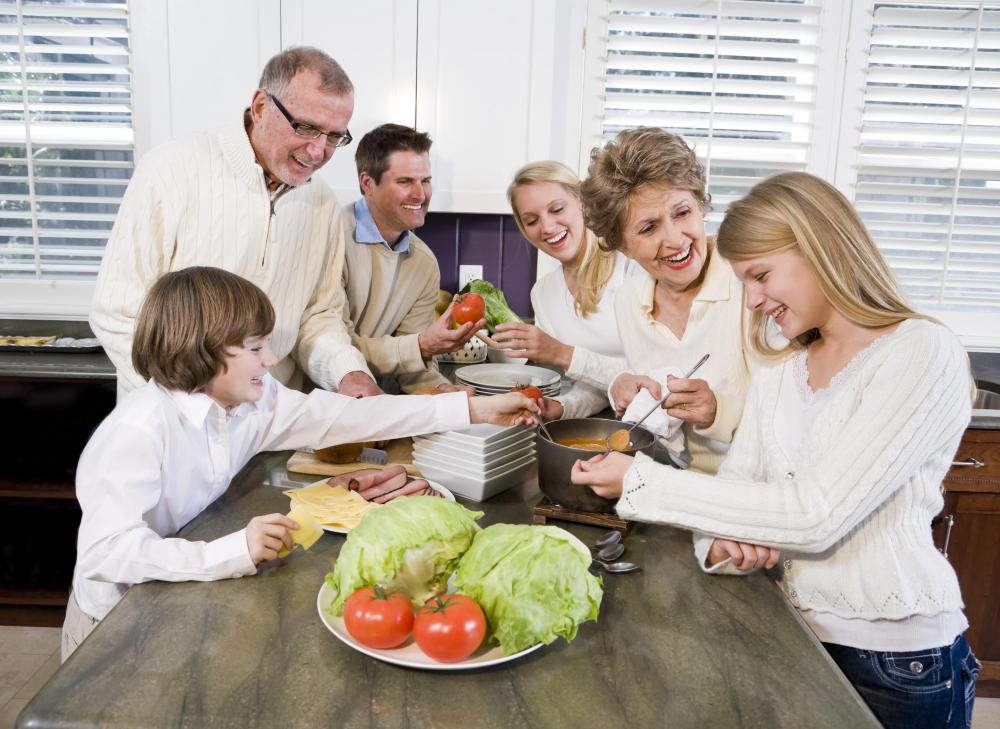At DelightedCooking, we're committed to delivering accurate, trustworthy information. Our expert-authored content is rigorously fact-checked and sourced from credible authorities. Discover how we uphold the highest standards in providing you with reliable knowledge.
What Are the Different Types of Dumplings for Stew?
When making dumplings for stew, a cook has many options. Quite a few different cultures have dumplings, such as stew nockerlns from Austria and guanimes de maiz from the Caribbean. Although most need only about 20 minutes of cooking time, some dumplings require an hour or two to fully cook in a dish. Specific ingredients vary by recipe and culture, and cooks often follow family tradition when making dumplings for stew.
Many different dumpling recipes are stew toppers. Other dumplings that simmer in water or broth can easily be adapted to be used in stews. Many European recipes — like butterkloesse, butternockerln, and other butter-based dumplings — are typically light in texture. In contrast, the cornmeal-based guanimes de maiz are often a denser and more filling dumpling. These usually resemble a tamale and are frequently used in fish or seafood stews.

The ingredients in dumplings for stew vary according to what foods are available in the region of origin, and the influences that have impacted that area through history. For example, the guanimes dumplings from the Caribbean often include ingredients widely used in that part of the world, like coconut milk, molasses, and cornmeal with anise-seed flavoring. By contrast, the Indian-inspired, lamb-based Mulligatawny stew may feature dumplings that include blueberries or raisins and nutmeg. Stew dumplings are usually more savory more than sweet, however.
Even though there are different techniques for making dumplings for stew, most must simmer or steam in a brothy dish. One of the secrets for making light dumplings is to steam them on top of simmering stew liquid, unless the recipe advises dunking them completely in the broth. If the stew is too thick, a cook can add boiling water, and stir it into the dish before adding the dumpling dough. Generally, a cook should not lift the lid during the steaming process or the dumplings may be tough.
Dumpling cooking times can vary greatly. A common boxed-mix recipe usually requires 10 minutes of cooking in an uncovered stew, and then 10 more minutes of cooking with the pot covered. Some recipes may even call for dumplings to be cooked in a stew for much longer. Therefore, it is important to consider the cooking time when planning a meal.
Different recipes typically advise different cooking techniques for making dumplings for stew, so a recipe should be followed to ensure success. For example, dumplings containing eggs may toughen if not prepared properly. Some cooks prefer to use glass lids on a stew, so that they can watch the dumplings expand as they cook. Generally, stew dumplings should have a fluffy, light texture.
One of the most complicated dumpling recipes is a Czech dish, called houskove knedliky. Although not steamed in a stew — or even specifically meant to be served with one — these bread dumplings are good with stews. The recipe typically calls for stale bread cubes, eggs, and milk to be mixed with other ingredients to form a dough. The cook rolls this into logs, boils them in water, and then slices the logs into dumplings before serving. Many people enjoy placing the slices in a bowl of stew because the bread dumplings absorb the stew juices nicely.
AS FEATURED ON:
AS FEATURED ON:











Discuss this Article
Post your comments